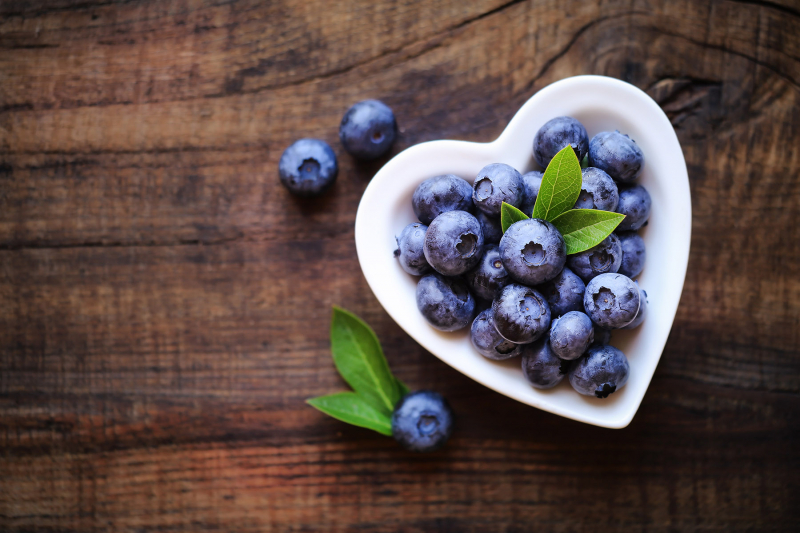Blueberries
Blueberries are linked to cranberries, bilberries, and huckleberries since they are members of the heather family. Blueberries come in a variety of varieties, thus their look may differ significantly. Highbush and lowbush blueberries are the two most popular types. The main nutrients in blueberries are 14% carbohydrates, 84% water, and trace quantities of protein and fat. Although blueberries mostly include simple carbohydrates like fructose and glucose, they also contain a little amount of fiber. The glycemic index (GI), which gauges how rapidly various meals boost blood sugar levels, gives these berries a score of 53. Due to its relatively low score, blueberries are safe for diabetics and shouldn't result in significant blood sugar rises.
Sugar content in blueberries is average at 15 grams per cup (148 grams). They do not, however, negatively affect blood sugar levels, which may be related to their high bioactive chemical concentration. The anthocyanins in blueberries may improve blood sugar regulation, according to test-tube research. Promising benefits have also been seen in human investigations. In a six-week trial, it was shown that giving obese individuals with a high risk of developing diabetes two blueberry smoothies per day improved their insulin sensitivity. By inhibiting specific digestive enzymes and preventing blood sugar increases after a high-carb meal, blueberries may also directly alter blood sugar levels.
Fresh, frozen, freeze-dried, and used in jams, jellies, and syrups are all options for blueberries. Make sure to look for added sugars on the label of dried and frozen blueberries. Choose all-fruit spreads without additional sweeteners, juices, or fillers when choosing jellies or jams.










